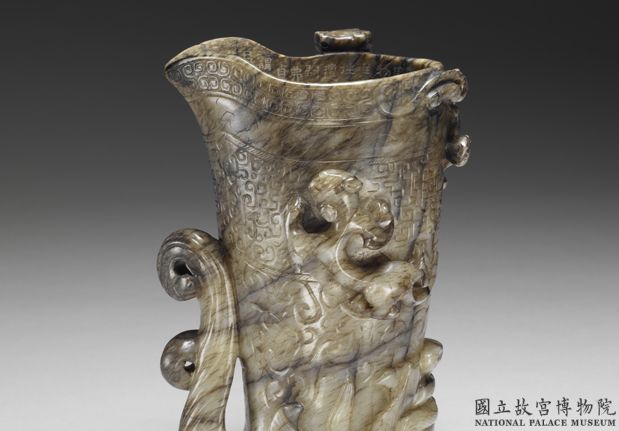Jade gong vessel with dragon head, 17th century, Ming dynasty
- Image Number: K1C005829N000000000PAG
- Dynasty: Ming dynasty
- Category: Jades
- Function: furnishings
- Material: Minerals/Jade Jewelry/Jade
- Description:
Gong originally means Si Jiao, or ox horn shaped drinking utensil. Volume XVI of Wang 黼’s “Rebuilding the Xuanhe Museum” contains “the first cup of the Han Dynasty”, which is painted in the shape of an ox horn. In the late Ming Dynasty and early Qing Dynasty, the dragon dragon shaped goblins carved with jade often appeared in the hands of collectors (Wang Shizhen, Twenty sixth Volume of Couple Talk in the North of Chi, Nine tailed goblins). Emperor Gaozong was very interested in the old ox horn shaped goblins in the Inner Court. He wrote poems for jade goblins from the late Ming Dynasty to the early Qing Dynasty. This carving of jade dragon tail goblins is one of them. At the bottom, the dragon head opens its mouth to hold the goblet, and the dragon tail attaches to the side of the goblet. The three dragon dragons cling to the goblet, either up, down, or over the mouth edge. The lower part of the gong body is carved with animal face patterns, the middle part is a hook pattern, and the mouth edge is a valley pattern. Although the shape and decoration of the instrument are modeled on the Han Dynasty, they are greatly deformed, deliberately emphasizing the taste of clumsiness and a sense of stagnancy. Gao Zong

![图片[2]-Jade gong vessel with dragon head, 17th century, Ming dynasty-China Archive](https://chinaarchive.net/Ming dynasty/Jades/K1C005829N000000000PAG-42267.jpg)
![图片[3]-Jade gong vessel with dragon head, 17th century, Ming dynasty-China Archive](https://chinaarchive.net/Ming dynasty/Jades/K1C005829N000000000PAG-42268.jpg)
Pictures & Images [HD] download
© Copyright
The copyright of the article belongs to the author, please keep the original link for reprinting.
THE END





